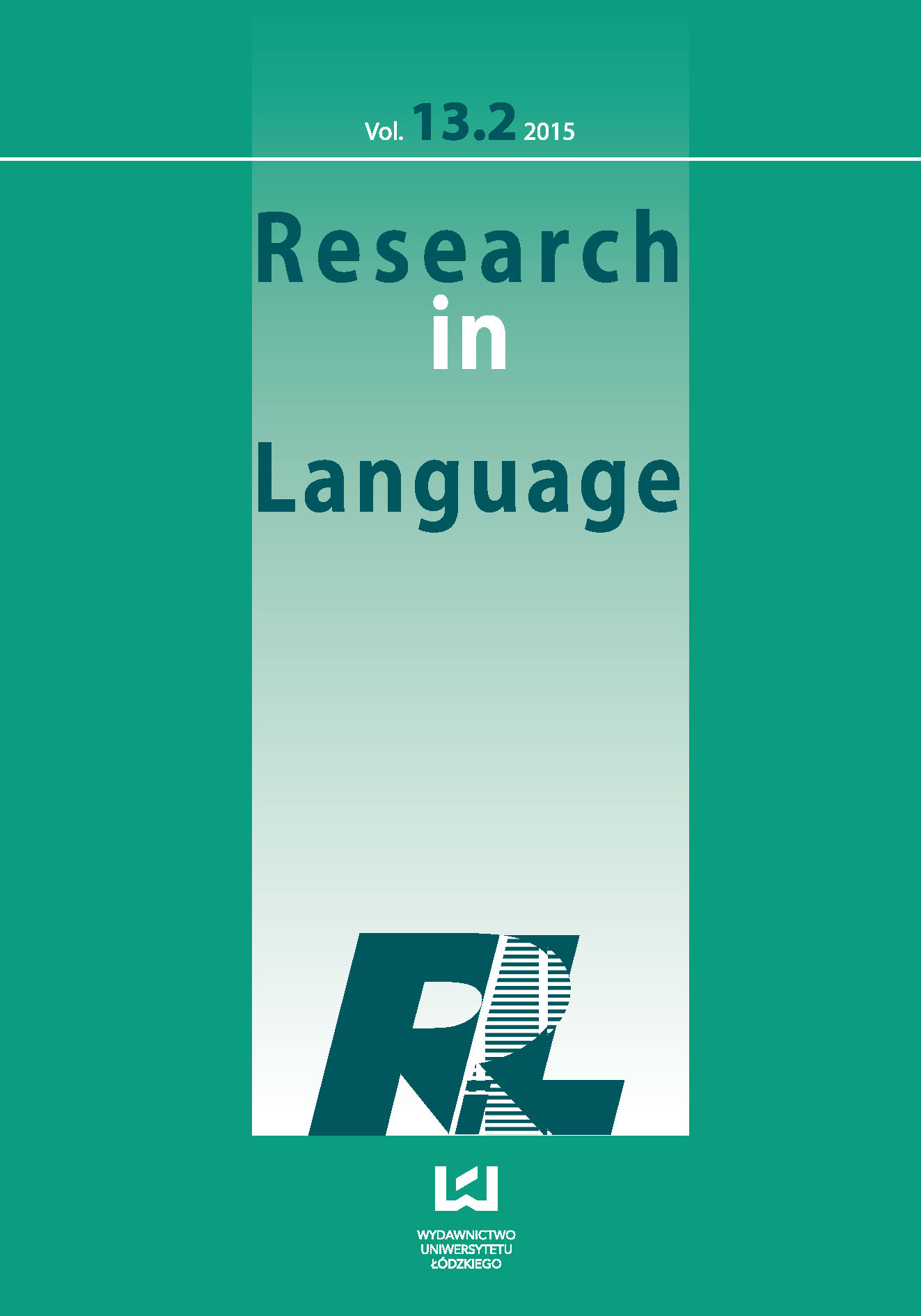The Interaction of Yer Deletion and Nasal Assimilation in Optimality Theory
DOI:
https://doi.org/10.1515/rela-2015-0019Keywords:
Optimality Theory, Derivational Optimality Theory, opacityAbstract
The problem of opacity presents a challenge for generative phonology. This paper examines the process of Nasal Assimilation in Polish rendered opaque by the process of Vowel Deletion in Optimality Theory (Prince & Smolensky, 1993), which currently is a dominating model for phonological analysis. The opaque interaction of the two processes exposes the inadequacy of standard Optimality Theory arising from the fact that standard OT is a non-derivational theory. It is argued that only by introducing intermediate levels can Optimality Theory deal with complex cases of opaque interactions.
References
Archangeli, D., & Suzuki, K. (1997). The Yokuts challenge. Derivations and Constraints in Phonology. In I. Roca (Ed.), (pp. 197-226). Oxford: Oxford University Press.
Google Scholar
Booij, G. E. (1997). Non-derivational phonology meets Lexical Phonology. Derivations and Constraints in Phonology. In I. Roca (Ed.), (pp. 261-288). Oxford: Oxford University Press.
Google Scholar
Cole, J. S., & Kisseberth C. W. (1995). Restricting multi-level constraint evaluation: Opaque rule interaction in Yawelmani vowel harmony. Urbana, IL: University of Illinois.
Google Scholar
Gussmann, E. (1980). Introduction to phonological analysis. Warszawa: PWN.
Google Scholar
Jarosz, G. (2006). Polish Yers and the Finer Structure of Output-Output Correspondence. Proceedings of the Berkeley Linguistics Society, 31, 181-192.
Google Scholar
Kiparsky, P. (1982). From cyclic phonology to lexical phonology. The structure of phonological representations, In H. van der Hulst & N. Smith (Eds.), part 1, (pp. 131-175). Dodrecht: Foris.
Google Scholar
Kiparsky, P. (1997). LP and OT. Handout, LSA Summer Linguistic Institute, Cornell University, Ithaca, N.Y.
Google Scholar
Kiparsky, P. (2000). Opacity and cyclicity. The Linguistic Review, 17, 351-367.
Google Scholar
Laskowski, R. (1975). Studia nad morfonologią współczesnego języka polskiego. Wrocław: Ossolineum.
Google Scholar
Lightner, T. M. (1963). Preliminary Remarks on the Morphophonemic Component of Polish. Quarterly Progress Report, Research Laboratory of Electronics, MIT, 71, 220-235.
Google Scholar
Lightner, T. M. (1972). Problems in the Theory of Phonology. Russian phonology and Turkish phonology. Edmonton: Linguistic Research, Inc.
Google Scholar
McCarthy, J. J. (1996). Remarks on phonological opacity in Optimality Theory. Studies in Afroasiatic Grammar. Papers from the Second Conference on Afroasiatic Linguistics, Sophia Antipolis. In J. Lacarne, J. Lowenstamm & U. Shlonsky (Eds.), (pp. 215-243). The Hague: Holland Academic Graphics.
Google Scholar
McCarthy, J. J. (1999). Sympathy and phonological opacity. Phonology, 16, 331-399.
Google Scholar
Orgun, C. O. (1996). Correspondence and identity constraints in two-level Optimality Theory. Proceedings of WCCFL 14. In J. Camacho, L. Choueiri & M. Watanabe (Eds.), (pp. 399-413). Stanford, CA: CSLI.
Google Scholar
Prince, A., & Smolensky P. (1993). Optimality Theory: Constraint interaction in generative grammar. Ms., Rutgers University, New Brunswick, NJ, and University of Colorado, Boulder.
Google Scholar
Rowicka, G. (1999). On Ghost Vowels: A Strict CV Approach. Ph.D. diss., LOT/University of Leiden: Holland Academic Graphics, The Hague.
Google Scholar
Rubach, J. (1984). Cyclic and Lexical Phonology. The Structure of Polish. Dordrecht: Foris.
Google Scholar
Rubach, J. (1986). Abstract vowels in three dimensional phonology: the yers. The Linguistic Review, 5, 247-280.
Google Scholar
Rubach, J. (1997a). Polish voice assimilation in Optimality Theory. Rivista di linguistica, 9, 291-342.
Google Scholar
Rubach, J. (1997b). Extrasyllabic consonants in Polish: Derivational Optimality Theory. Derivations and constraints in Phonology. In I. Roca (Ed.), (pp. 551-581). Oxford: Oxford University Press.
Google Scholar
Rubach, J. (2000a). Backness switch in Russian. Phonology, 17, 39-64.
Google Scholar
Rubach, J. (2000b). Glide and glottal stop insertion in Slavic languages: A DOT analysis. Linguistic Inquiry, 31, 271-317.
Google Scholar
Rubach, J. (2003a). Polish Palatalization in Derivational Optimality Theory. Lingua, 113, 197-237.
Google Scholar
Rubach, J. (2003b). Duke-of-York Derivations in Polish. Linguistic Inquiry, 34, 601-629.
Google Scholar
Rubach, J. (2004a). Posterior Stridents in Korean and Russian. Studies in Phonetics, Phonology and Morphology, 10, 145-167.
Google Scholar
Rubach, J. (2004b). Derivational in Optimality Theory: A Reply to Burzio. Linguistic Inquiry, 35, 656-670.
Google Scholar
Scheer, T. (2006). How yers made Lightner, Gussmann, Rubach, Spencer and others invent CVCV. Studies in Constraint-based Phonology. In P. Bański, B. Lukaszewicz, & M. Opalińska (Eds.), (pp. 133-207). Warsaw: Wydawnictwo Uniwersytetu Warszawskiego.
Google Scholar
Szpyra, J. (1992). Ghost Segments in Nonlinear Phonology: Polish Yers. Language, 68, 277-312.
Google Scholar
Yearley, J. (1995). Jer Vowels in Russian. Papers in Optimality Theory. In J. N. Beckman, L. W. Dickey, & S. Urbanczyk (Eds.), (pp. 533-571). Amherst: University of Massachusetts, GLSA.
Google Scholar










